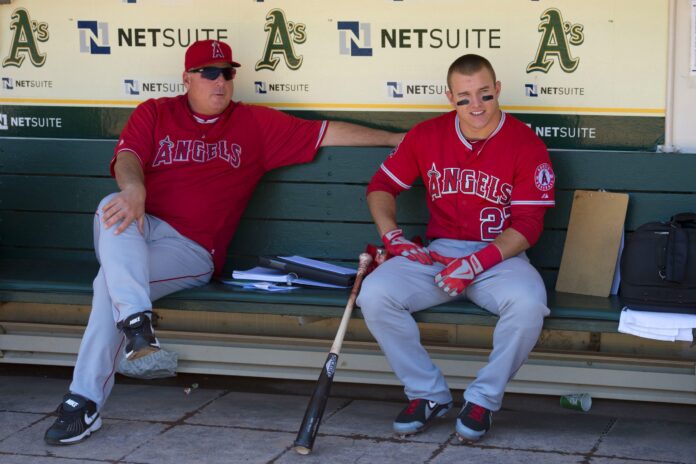Image credit: © Kyle Terada – USA TODAY Sports
This article was originally published on December 22, 2023.
“Hindsight is 20/20,” we say as we wistfully look back to yesteryear and our ill-fated decisions in our dynasty leagues. This reflection is important, however. Analyzing what went right and what went wrong is vital to improving our process. But, exactly how do we assess our dynasty valuation process?
Bret Sayre, the President and CEO of Baseball Prospectus, founded The Dynasty Guru in August 2012. Bret’s process (and my own) is to rank players by the perceived present value of future production. Now, nearly 11 years removed from his first Top-500 Dynasty Rankings prior to the 2013 season, it is time to revisit those ranks and those that followed and judge them against actual production.
To do so, I used Fangraphs’ Auction Calculator to calculate the value of player production from 2013 to 2023, based on standard scoring in a 15-team league with one catcher and minimum innings pitched of 1,000 (except 370 in 2020). Then, I applied a present value formula with a twenty percent (20%) interest rate. (Typically, future production is heavily discounted in most dynasty leagues.) Finally, I eliminated any player unsigned prior to the season in question. For example, for the 2013 rankings, I excluded José Abreu, Kris Bryant, and Trea Turner, among others.
Generally, Bret did quite well. Mike Trout ranked atop both lists. (This will be a common theme.) Further, eight of Bret’s top-eleven players ranked within the top 29 in present value of actual production. In addition to Trout, Bret was also spot on for several players, ranking each player similarly to their ultimate production:
For players that underperformed Bret’s top-ten ranking, there are clear excuses. Ryan Braun was suspended midseason in 2013 for performance-enhancing drugs, and, while he performed well the rest of his career, his performance certainly dipped. An ankle injury sapped Matt Kemp’s speed. A neck injury effectively ended Prince Fielder’s career prematurely.
Arguably Bret’s biggest miss was Allen Craig. In retrospect, it is easy to see why ranking Craig as high as 33rd-overall was a mistake. At the time, Craig was coming off a season in which he hit .307/.354/.522 with 22 home runs (after hitting .315/.362/.555 in limited time the year before). Yet, Craig was 28 years old, was a poor defender and athlete, and had less raw power than his gaudy two-year run suggested.
With experience, you hopefully learn to identify and properly fade players like Craig. Did Bret learn from his mistakes?
Yes, Bret learned from his mistakes. (Sort of. He did still rank Allen Craig at 72nd overall.)
Once more, Mike Trout sits atop both sets of rankings. After that, things got a bit dicier. This year, Bret only had six of his top-eleven players within the top 25 in present value of actual production. Bret was also spot on for fewer players:
The issue in Bret’s 2014 rankings stems from declining production from aging players. Here is a perfect example of the risks associated with valuing 30+ year-old players highly. Miguel Cabrera (31 in April), Hanley Ramirez (30), Ryan Braun (30), and Robinson Canó (31) all ranked within the top ten and, while none truly fell off a cliff, none failed to return close to expected value given their respective ranking. At the same time, Nelson Cruz (33) began his historical run in 2014. Often, it is impossible to predict how individual players will age. However, and as a general rule, the vast majority of highly-ranked 30+ aged players did not provide value at cost.
Mookie Betts supplanted Mike Trout for the first time in 2015 as the new number one in the rankings of present value of actual production. Of course, Mike Trout remained the unquestioned number one in Bret’s rankings (as he should have).
Bret’s 2015 rankings had some high-profile misses. Carlos Gomez (9) began a serious decline in 2015 at the age of 29. Speed-oriented players with poor approaches and non-elite contact rates or quality of contact are a risky cohort. Gomez’s decline is an apt harbinger of the potential decline of Trea Turner. Meanwhile, Miguel Cabrera (7) was entering his age-32 season and coming off his lowest home run total (25) since his rookie year.
In addition, Bret’s 2015 rankings only had six of his top-16 players within the top 35 in present value of actual production. However, Bret was mostly spot on for more players:
Indeed, Bret’s 2015 rankings were arguably his best yet. His rankings captured 89 of the 100 top performing players by present value.
It is nearly impossible to be perfect in this process. Who would have predicted José Ramírez would develop into a superstar? At the time, he was projected for a part-time role after hitting just .262/.300/.346 over 266 plate appearances the year before. Ronald Acuña Jr. was a little known international signing for $100,000 the summer before. Whit Merrifield went unselected in the Rule 5 Draft later in 2015. Player outlooks and evaluations can change quickly, and the astute dynasty manager should be prepared to adapt and discover these gems.
Part 2 will examine 2016-2018 and offer concluding thoughts!
Thank you for reading
This is a free article. If you enjoyed it, consider subscribing to Baseball Prospectus. Subscriptions support ongoing public baseball research and analysis in an increasingly proprietary environment.

